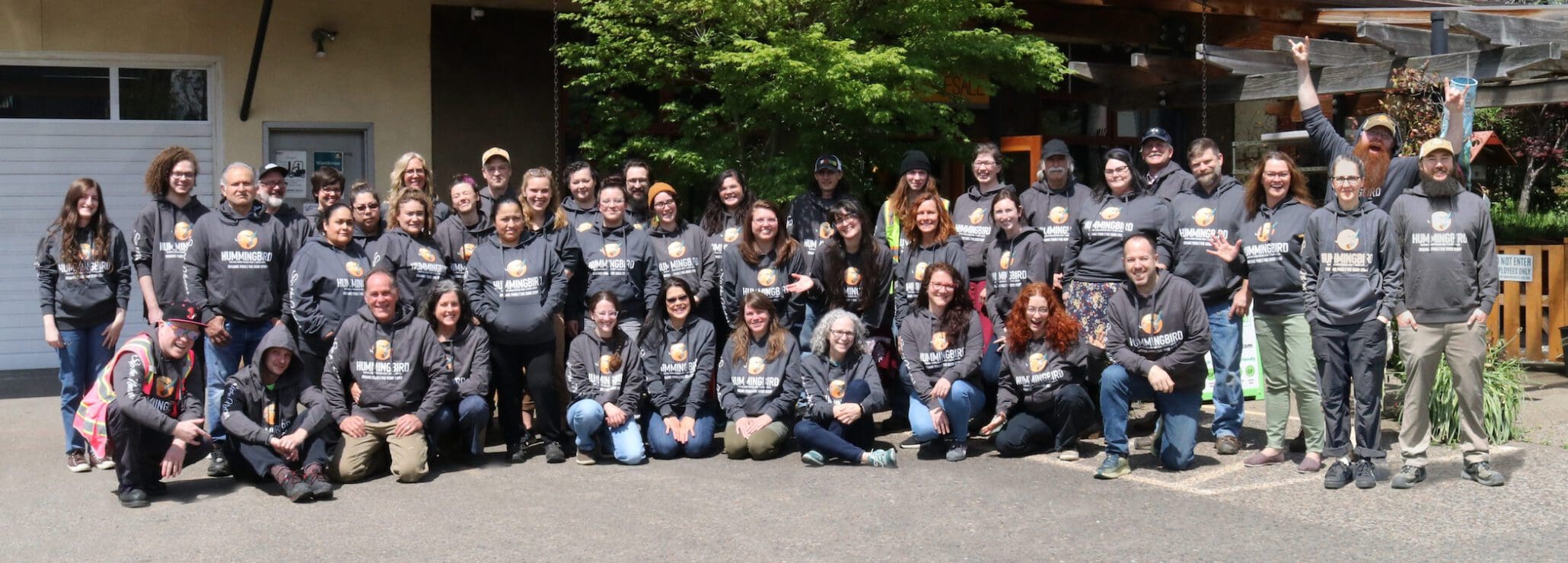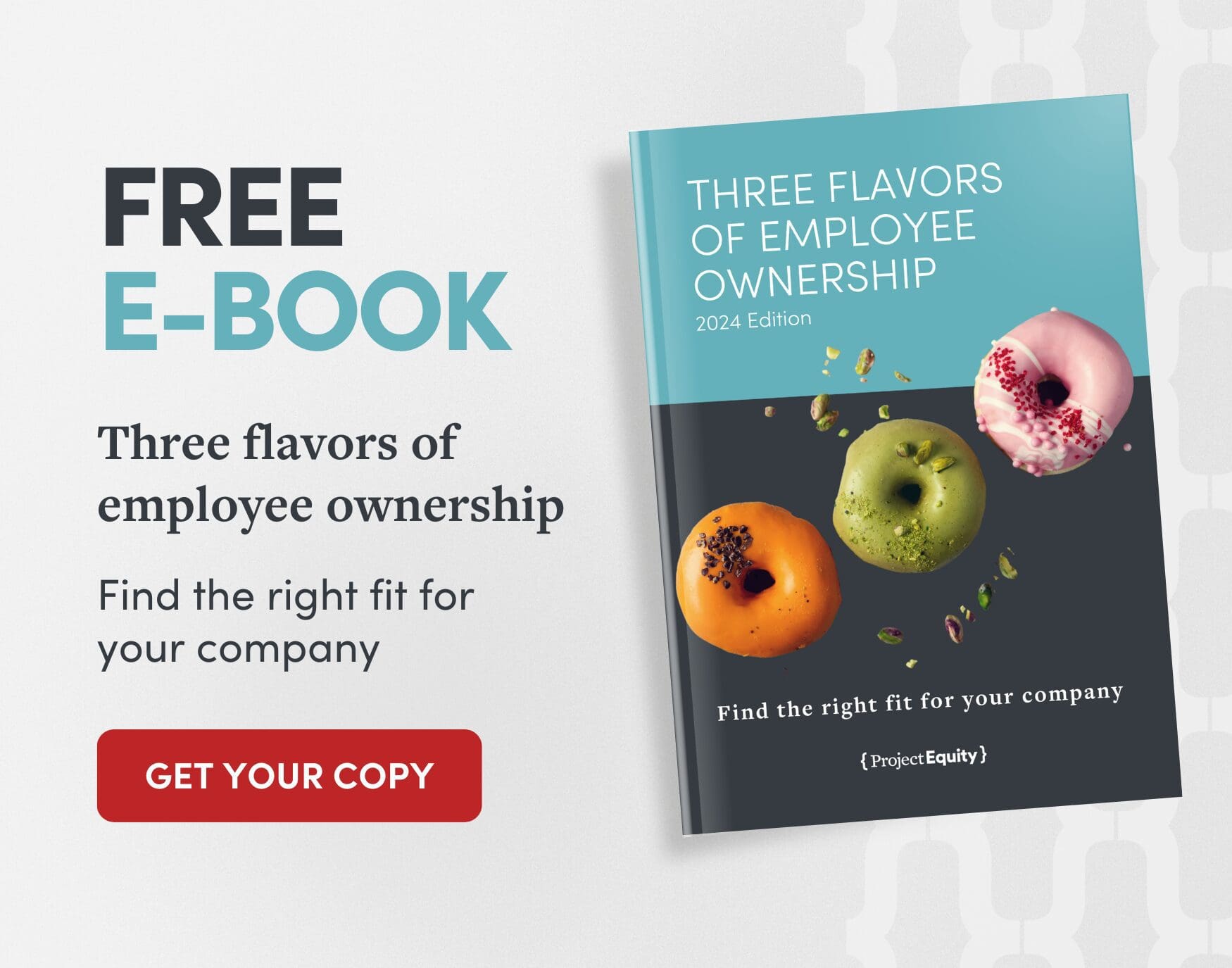When is a business a good fit for an Employee Ownership Trust (EOT) transition?
- Michelle Philippon
Originally popular in the UK, Employee Ownership Trusts (EOTs) have begun to pick up momentum in the U.S.
EOTs are attractive models of employee ownership because they are generally more flexible than cooperative structures and because they cost less to set up and maintain than Employee Stock Ownership Plans (ESOPs).
What is an EOT?
An EOT is a type of Perpetual Purpose Trust (PPT) that safeguards the company’s purpose over the long term. During an EOT transition, the company is sold to a trust. The trust holds the shares in perpetuity on behalf of the employees, who receive profit-sharing and other benefits like they do in worker-owned cooperatives.
The company can place all or some of its shares in the trust, providing it with full or partial ownership of the business. The sale to the trust acts as a leveraged buyout with the company using future profits to pay off the debt over time—usually over a period of five to 10 years.
Six EOT readiness factors
You may be wondering when a business is a good fit for an EOT transition. Here’s what we’ve learned in consulting with businesses on EOT transitions—such as Hummingbird Wholesale, who is featured in this blog post’s image—over the years.
1. Works for businesses of any size with W2 employees
Like worker cooperatives, EOTs can serve as a succession option for any size of business. However, they can be more difficult to set up and maintain for micro-businesses (i.e., businesses with fewer than 10 employees) due to ongoing governance requirements.
2. Stable, consistent cash flow
An EOT costs between $50,000 to $80,000 to set up, with annual ongoing costs between $10,000 and $20,000 being paid to the trustee. To support financing of the sale as well as ongoing organizational sustainability, a business needs to have a sufficient, continuous cash flow, both now and in the future.
How do you pay for the setup? Selling owners are typically willing to finance a portion of the sale, but increasingly there are community development financial institutions (CDFIs) offering financial services without personal guarantees for EOT transactions.
In these cases, an owner could pursue a mix of seller and bank financing, receiving a portion of the sale price upfront and receiving the remaining portion of the sale price over a period of time. (Businesses can also access capital through EO funds like Project Equity’s Employee Ownership Catalyst Fund.)
Meanwhile, annual maintenance costs are funded from operational expenses.
3. Desire to ensure business remains employee-owned
One of the most intriguing aspects of an EOT is that it is set up to exist in perpetuity, disincentivizing the possibility of a future sale to an outside entity. This locks in the principles of employee ownership for all present and future employees. This is in contrast to worker-owned cooperatives, which can sometimes accommodate future sales more easily (depending on how they’re set up), as well as ESOPs, which generally require governing bodies to consider offers from outside buyers as part of their fiduciary duty.
4. Capital gains deferral not a key priority
One of an ESOP’s biggest selling points is that the seller can often indefinitely defer capital gains taxes—i.e., the 1042 rollover. In an EOT sale, sellers are not able to defer capital gains taxes. Therefore, an EOT is a good fit for a business if the capital gains deferral is not a motivating factor.
5. Prefers a flexible governance and ownership structure
Worker cooperatives have predefined requirements for governance, ownership and profit-sharing structures that are based on membership. Not all businesses want this. EOTs offer flexible governance and profit-sharing structures that apply to all employees and are created during the EO transition process. Usually, EOTs also have more flexibility in structuring the sale of business, as well as what ongoing participation looks like for employees moving forward.
6. Succession leadership team in place or actively in development
For an EOT transition to be successful, a business should have a robust leadership team ready—or at least in development. Ensuring this team is ready to take over safeguards operational success and is often necessary if external financing is sought. The good news is that with the flexible nature of EOTs, selling owners can take their time exiting while coaching the team to step in their shoes.
What if a business is a good fit for an EOT?
Business owners: Do you find that your business has the readiness factors on this list? Let’s chat! Schedule a free consultation to talk through this topic further and start the EO transition process.
Business advisors: Interested in being an EOT expert and offering this as a service to your clients to build a competitive advantage? Check out our accredited, on-demand EOT courses. We also welcome you to contact us to begin their journey.
Not a good fit for an EOT? Consider an ESOP or worker cooperative
Are you a business owner? Then:
- If your business has 40+ employees, can afford higher transition and maintenance costs and is interested in tax advantages, you may want to consider transitioning into an ESOP instead.
- If you have a smaller business, desire lower ongoing maintenance costs and are drawn to a model that puts workers in active governance roles with the cooperative principals of membership, you may want to consider becoming a worker cooperative—known as a coop—instead.
To discuss what EO model your business might benefit from, schedule a free call with one of our EO experts. We can talk through the current state of your business and your goals for the future so you can decide what’s best.
Business advisors: Want to become well-versed in ESOPs and / or coops? We offer a full selection of accredited courses on these EO types and would love to partner together on their EO transitions—simply reach out to us!
A business is well-suited for an EOT if it demonstrates stable, consistent cash flow and can pay $10,000 to $20,000 annually for trustee and maintenance responsibilities.
Yes—EOTs work for businesses of virtually any size with W‑2 employees, though micro-businesses (under 10 employees) may face challenges with governance requirements. The transition typically uses a leveraged buyout.
An EOT ensures long-term employee ownership, keeping the company’s purpose intact for current and future staff—unlike some models that may permit future sales. It also offers flexible governance structures, which can be customized to the business’s needs, though it does not provide capital gains tax deferrals like an ESOP would.
About the author
Michelle Philippon is the content manager at Project Equity, where she helps drive the organization’s storytelling by crafting and distributing content that showcases the power of employee ownership. A creative and results-driven content marketer, Michelle loves working with internal and external SMEs to provide useful insights to help small business owners, business advisors and economic developers achieve their goals.



